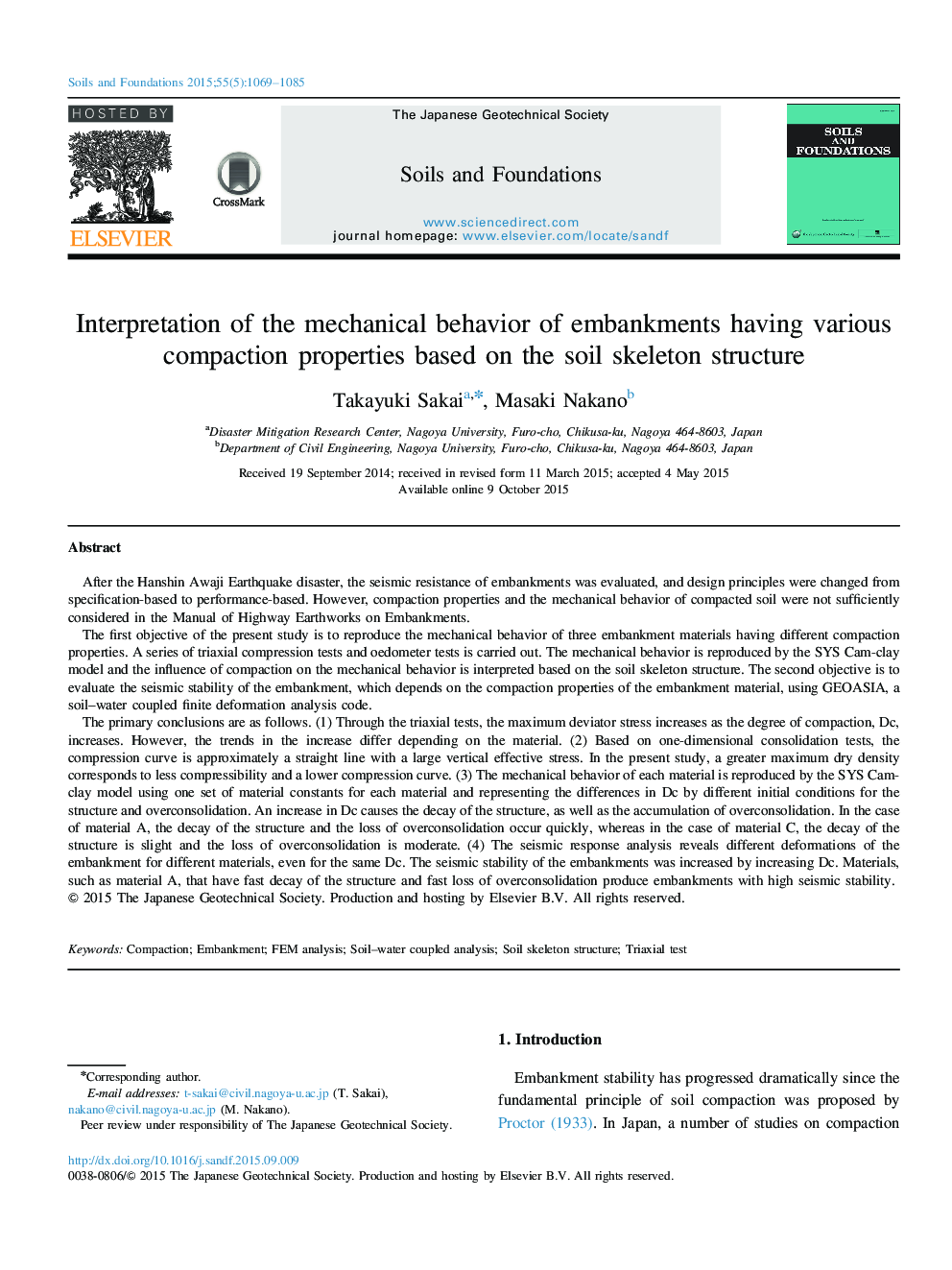| Article ID | Journal | Published Year | Pages | File Type |
|---|---|---|---|---|
| 307089 | Soils and Foundations | 2015 | 17 Pages |
Abstract
The primary conclusions are as follows. (1) Through the triaxial tests, the maximum deviator stress increases as the degree of compaction, Dc, increases. However, the trends in the increase differ depending on the material. (2) Based on one-dimensional consolidation tests, the compression curve is approximately a straight line with a large vertical effective stress. In the present study, a greater maximum dry density corresponds to less compressibility and a lower compression curve. (3) The mechanical behavior of each material is reproduced by the SYS Cam-clay model using one set of material constants for each material and representing the differences in Dc by different initial conditions for the structure and overconsolidation. An increase in Dc causes the decay of the structure, as well as the accumulation of overconsolidation. In the case of material A, the decay of the structure and the loss of overconsolidation occur quickly, whereas in the case of material C, the decay of the structure is slight and the loss of overconsolidation is moderate. (4) The seismic response analysis reveals different deformations of the embankment for different materials, even for the same Dc. The seismic stability of the embankments was increased by increasing Dc. Materials, such as material A, that have fast decay of the structure and fast loss of overconsolidation produce embankments with high seismic stability.
Related Topics
Physical Sciences and Engineering
Earth and Planetary Sciences
Geotechnical Engineering and Engineering Geology
Authors
Takayuki Sakai, Masaki Nakano,
